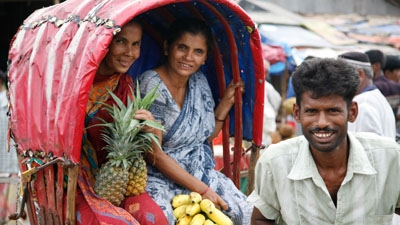Healthy Economic Growth in Bangladesh
June 3, 2012 – While Bangladesh’s growth performance has been improving in recent years, the Bangladesh Economic Update for May 2012 finds that GDP growth has moderated from 6.7% in FY11 to 6.3% in FY 2012. This is due to unfavorable external economics and internal supply constraints.
While this 6.3% GDP growth in FY12 is higher than the developing country average (5.5%), it is lower than the South Asia average (6.5%).
Bangladesh has maintained this average growth over the last three years through strong manufacturing and remittance growth. Transport and financial intermediation have led growth in services.
Continuing Macroeconomic Pressures
Inflationary pressures, particularly from an increase in non-food prices, have worsened. Overall inflation is in double digits and non-food prices rose 14% in March 2012, compared to 4.3% a year earlier. This has been driven by expansionary monetary and fiscal policies.
On the other hand, food price increases have declined from 13.8% in September 2011 to 8.1% in April 2012, good news for the poor.
The fiscal deficit has increased despite significant increases in revenue. Recurrent expenditures are likely to overshoot the original 2012 budget target, driven by larger-than-budgeted growth in subsidies and transfers. The central government budget deficit increased by more than 2.5 times from July to January compared to the same period the previous year.
The balance of payments is under strain. The current account surplus during July-March, FY12 was $456 million compared to nearly $710 billion during same period the previous year, owing largely to the sharp rise in petroleum-product imports to feed the liquid fuel-based power plants. With exports starting to decline in March 2012, pressure on the balance of payments could intensify.

